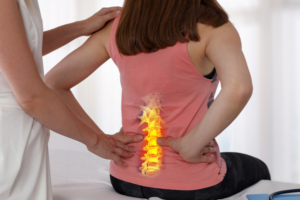Sleep and mental health are deeply intertwined, with each influencing the other in complex ways. Chiropractic care, often associated with pain relief and spinal alignment, also plays a significant role in enhancing both sleep quality and mental well-being.
Many patients have trouble sleeping due to physical discomfort or stress. Spinal misalignments, also known as subluxations, can disrupt the nervous system’s normal function. This disruption can lead to heightened stress levels, resulting in difficulty falling or staying asleep. Chiropractic adjustments aim to correct these misalignments, helping the nervous system function more efficiently, reducing stress, and promoting better sleep.
In one study, researchers found that regular chiropractic care, focusing on spinal alignment and nervous system function, significantly improved sleep quality in patients suffering from insomnia. The study observed that after just a few weeks of consistent adjustments, patients reported falling asleep faster and enjoying longer, more restful sleep periods. This improvement in sleep quality had a direct positive effect on their mental health, as better sleep is associated with reduced anxiety and depression levels (5). This underscores the importance of regular chiropractic care in maintaining good sleep and mental health.
Mental health is closely tied to the body’s overall condition
Chronic pain, poor posture, and physical stress can all contribute to mental health issues such as anxiety and depression. Chiropractic care addresses these physical stressors by improving posture, reducing pain, and enhancing overall bodily function. As physical symptoms improve, many patients notice a corresponding improvement in their mental outlook.
A review published in the Journal of Alternative and Complementary Medicine underscores the potential of chiropractic care to alleviate symptoms of anxiety and depression by addressing the physical discomfort often associated with these mental health challenges. The review emphasizes that when patients experience relief from chronic pain or discomfort, their mental health often improves, leading to a better quality of life (1).
Chiropractors also often incorporate lifestyle advice into their care plans, including recommendations for exercise, nutrition, and stress management techniques. These elements contribute to a more comprehensive approach to improving sleep and mental health. For example, regular exercise and a balanced diet are known to enhance mood and reduce stress, which further supports better sleep and mental health.
Personal Stories
Many patients have shared personal stories of how chiropractic care has changed their lives, not just by alleviating pain but by restoring their ability to sleep well and feel mentally refreshed. One patient, for instance, struggled with insomnia and anxiety for years before seeking chiropractic care. After a few months of regular adjustments, they reported sleeping through the night and feeling less anxious and more positive during the day.
In summary, chiropractic care offers more than just physical relief. Addressing the underlying causes of sleep disturbances and physical stress helps patients achieve better sleep and improved mental health, leading to a more balanced and fulfilling life.
Call us today for an appointment! 517.627.4547
1.”The Impact of Chiropractic Care on Anxiety and Depression: A Review.” *Journal of Alternative and Complementary Medicine*, vol. 25, no. 3, 2019, pp. 176-182.











